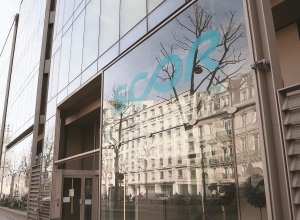SCOR
SCOR successfully executed a Eu250m 32NC12 Tier 2 issue on 2 June and here Marco Circelli, head of group capital and treasury management, SCOR SE, explains the thinking behind it.
What was the rationale behind this transaction? Do you have any solvency issues, particularly under Solvency II?
Marco Circelli, SCOR: We wanted to benefit from exceptional market conditions with low rates and attractive credit spreads. SCOR’s solvency is very strong, and the contemplated debt issuance has nothing to do with our solvency position and Solvency II. It will be positive for our solvency ratio, since part of the proceeds will be used to refinance debts which had no capital credit in Solvency II.
Why did you not hold a roadshow? Was there any other marketing ahead of the transaction?
Circelli, SCOR: SCOR actively meets credit investors during conferences and roadshows, on an ongoing basis. Over the past few years we have been able to build a strong reputation in the credit and financial markets. For this transaction, we decided to launch a global investor call, which was put online a day before issuance. The feedback from investors was very positive – they appreciated being updated on the status of our company before launching the trade.
You issued into a relatively volatile market. How did the current volatility in interest rates and the Greek turmoil affect your decision to issue? How, if at all, did the market conditions ultimately affect execution?
Circelli, SCOR: In a volatile credit market, it is very important for us to act fast. In addition, we were also anticipating coming ahead of a heavy insurance issuance pipeline. So, we monitored the market very closely and found an optimal window the day before the ECB rate announcement in June. Due to SCOR’s reputation and our proposed structure, our transaction was very well received by investors.
Were you satisfied with the level you achieved, the quality of the order-book, and the performance in the secondary market?
Circelli, SCOR: Yes, we were very satisfied. The order book was largely dominated by insurance companies and investment managers. We also believe that we priced the transaction at the right level, facilitating a decent performance in the secondary market despite ongoing market volatility.
This was the first fully-compliant Solvency II Tier 2 offering from a French issuer since the end of the grandfathering period. How did it affect the structuring of the transaction?
Circelli, SCOR: Obviously it affected the structuring of the transaction a lot. Solvency II Level 2 texts have been in force since January 2015, therefore any issuance conducted from this time onwards cannot benefit from the transitional arrangement under Solvency II. Any future debt structure, qualified as capital, by insurance companies needs to be compliant and to follow Solvency II rules.
Why did you choose a 32NC12 structure?
Circelli, SCOR: Firstly, it fits perfectly into our overall debt maturity/call date table, and secondly, we chose it due to the rather flat swap rate and credit spread curve between years 10 and 12. For the additional two years we just paid 25bp more. Last, but not least, over the past two years there have been a large number of issues with a call date in 2025, so we anticipate significant refinancing from insurance companies for this period.
Interest rates are currently extremely volatile. To what extent does this affect your capital requirement/capital planning?
Circelli, SCOR: We are closely monitoring interest rates and their impact on our solvency. Since the duration of our liabilities is much longer than the duration of our assets, and our business focuses mainly on traditional underwriting, excluding saving products and other types of business that depend on financial performance, the interest sensitivity on our solvency is relatively low. A decrease of 100bp would negatively impact our solvency ratio by 9 points, whereas an increase of 100bp would improve our solvency ratio by 10 points. Both scenarios would keep SCOR’s solvency position in the optimal zone of 185%-220%, as defined by the company under its current three year strategic plan “Optimal Dynamics”.
Would you like to comment on how you are preparing your issuance plans for the rest of the year or for 2016, as we understand that you have limited funding needs?
Circelli, SCOR: Indeed, SCOR’s refinancing needs are remote. We already pre-financed the refinancing of the Eu350m (outstanding amount Eu257m) subordinated debt that is callable in 2016, a year ago. The other debt of Sfr650m, callable in 2016, is a retail placement on the Swiss market. Together with our management team we closely monitor the market and decide on our financing plan, subject to market conditions.

